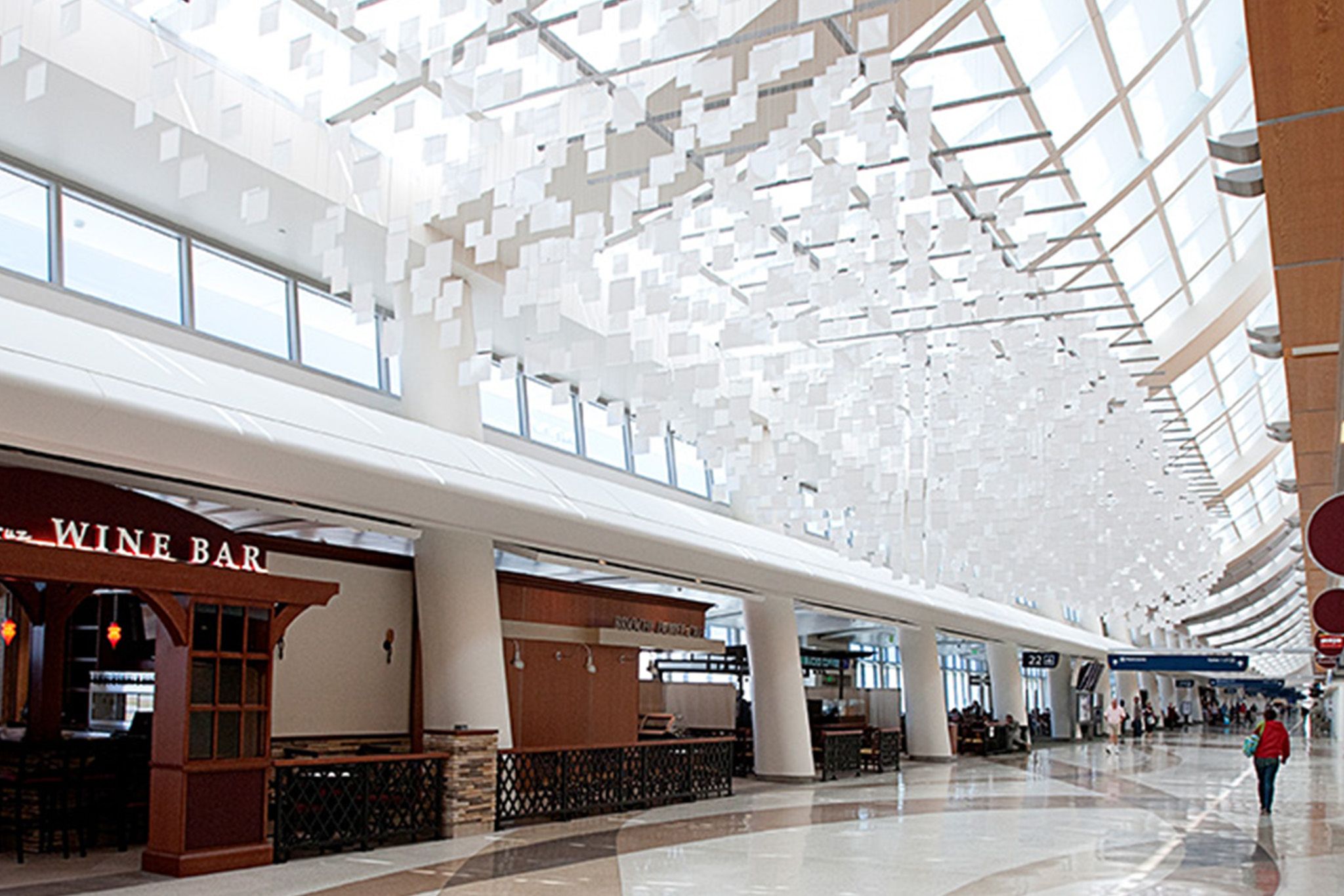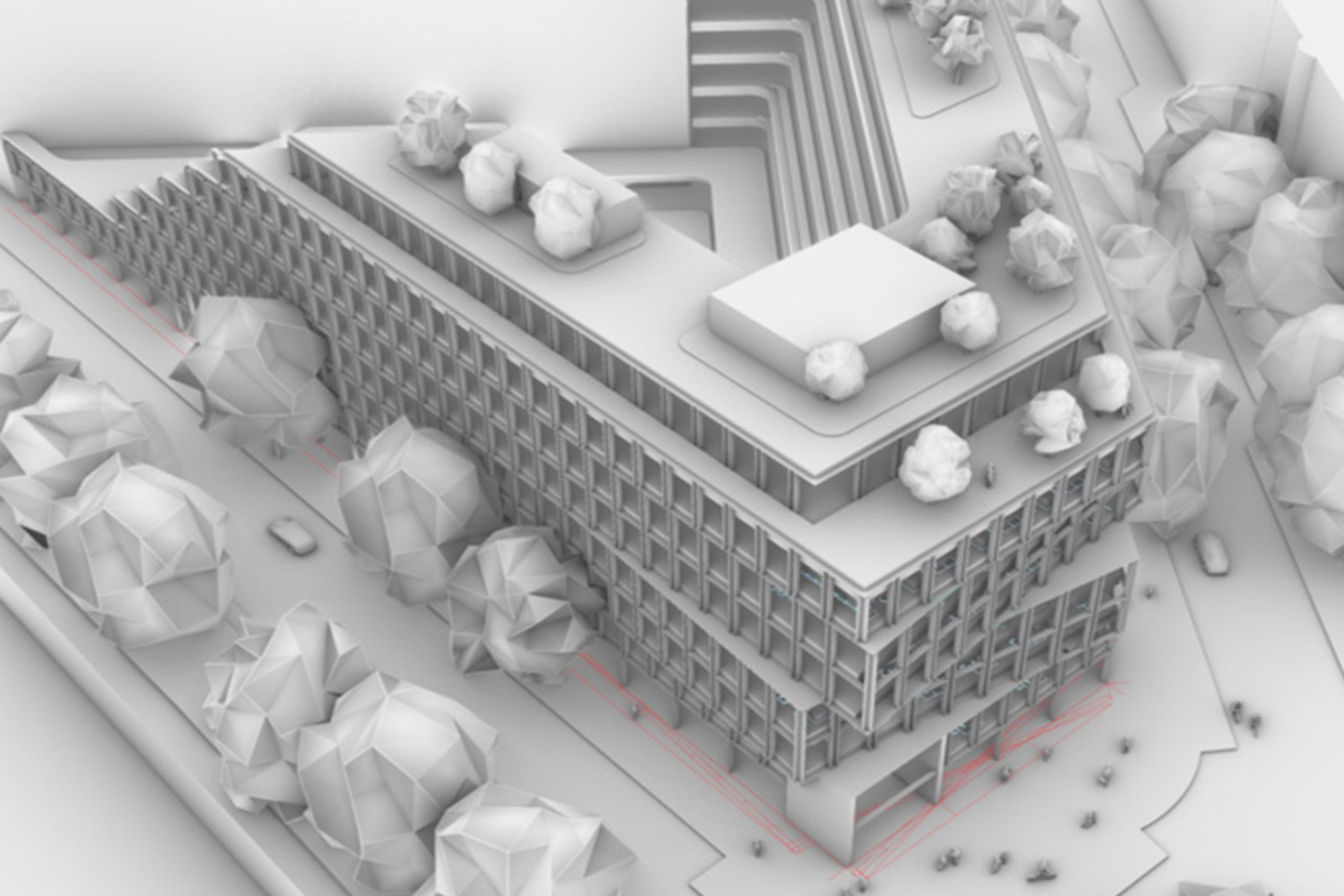Mediatecture is the seamless integration of digital media into the built environment. The goal is to create empathic spaces that enable people to experience the full potential of digital intelligence.
Since its early days, the success of the internet has depended on innovative user interfaces — the growing amount of electronic digital data required an imaginary topography, a virtual space, to exist in our brains. We needed windows of all kinds to access and interact with this virtual reality. In the physical world, PCs and screens, keyboards, mice, and other hardware started to inhabit our environments. By aiding portability, the emergence of smartphones as powerful mobile computers was key to the success story of the internet. New apps with intuitive user interfaces have radically changed how we interact with the internet and communicate with each other in our daily lives. Yet our understanding still sees a separation of physical and virtual space, which we can visit and interact with independently. We propose a step-by-step scenario projecting a future where architecture and media merge and enable a truly smart environment that is at once intuitive, human, and aesthetic.
A
MANIFESTO
ON
MEDIATECTURE
1.
A NEW REALITY BEYOND SCREENS
The first digital revolution created a simulated world extending behind screens; the second will liberate digital content and reconnect it with our physical world.
Screens will become larger and break free from their conventional envelopes; the surfaces around us will not only frame space but allow for dynamic activation through media. At the same time, devices will become smaller and seem to disappear over time. Head-up displays in cars and even smart glasses are only some of the possibilities that could replace screens.
2.
STAYING HUMAN
Rather than dulling our senses, well-designed augmented reality will help sharpen them, thereby enhancing our abilities.
Screen-led atrophy will be followed by an active digital environment that will enhance our physical senses – scale and materiality will have to correspond and react to the full range of our sensory apparatus.By examining aspects that were not previously communicable in the digital realm, we will be able to discover what human sensory experience really means: Empathy, innovation, serendipity, atmosphere, fidelity, autonomy, privacy, the subconscious – these are some of the key non-physical ingredients that make up our analog reality.
3.
PEOPLE + MEDIA + SPACES = SINGULARITY
When merging with smart digital spaces, it will be necessary to keep looking for an adequate translation of what it means to stay human.
Material boundaries will be broken down and offer a new perception of the world, enabling a seamless coexistence of people, media, and space.Digital hardware will gradually assume the form of a quiet, minimal material presence in the background – users will not be distracted by technology but become immersed in it and direct it intuitively according to their needs. The key remaining step is the seamless integration of access tools into our modes of human expression and perception – eyes, ears, skin, voice, and gesture – and the total integration of virtual information into the physical space that surrounds us.
4.
NEGOTIATION
The interplay between the user and a building needs to be renegotiated – architecture itself will become the new user interface.
Currently, the concept of a smart building is mostly limited to its technical infrastructure and is often more sophisticated than its users’ actual needs. The intelligence of a building should offer a new dimension: A better, more empathic interface that enables an intuitive relationship between smart environments and their users.
5.
VISUALIZING IMPACT
Information can attain an aesthetic quality of great narrative potential.
Using artistic strategies to translate data into visual experiences will allow people to develop moreempathy toward their environment and improve their overall quality of well-being.The positive performance of environmentally optimized buildings is highly dependent on user behavior: Visualizing such information will help nudge users toward more energy-conscious behavioral patterns.
6.
ECOLOGICAL KINDNESS
Striving for an equilibrium between nature and mediatecture must become part of design practice.
Energy consumption is becoming the key driver for ecological intelligence. Whenever augmented environments are created, energy and creative focus are missing in the upkeep of our physical habitat: nature. Technological discoveries from other fields (art, material sciences) can inspire new, sustainable solutions on an architectural scale that display low energy consumption, conform to natural perception, or lower light pollution. A circular economy and cradle-to-cradle thinking require complete documentation of buildings, streets, and infrastructure, and will turn our built environment into a resource of the future.
7.
PACE LAYERING
When designing for the physical world, digital technology shouldn’t be an afterthought — the drastically different life cycles of a building’s physical shell, its furnishings, and its digital hardware and software need to be well-calibrated.
At any given point in the life of the building, all these elements need to be orchestrated while allowing for a constant stream of updates. To ensure a future-proof design, digital components need to be integrated into the physical space using a “loose fit” approach.
8.
NEW VALUES
The sophistication of media integration in augmented spaces will greatly enhance the built environment's long-lasting experiential, ecological, and investment value.
The rise of an economy of human interaction and sustainable collective behavior as an alternative to purely material and capital-based ideologies has just begun. As the fundamental element of culture, human interaction will become the currency of the future. Innovation, ideas, learning, and the exchange of knowledge will be the corresponding products – media interfaces will allow us to increasingly overcome physical borders and move toward a fluid global commons for human culture.
9.
THE MEDIATECTURE EXPERIENCE
Mediatecture and augmented spaces have the potential to combine the best qualities of the digital and physical worlds, and thus create truly hybrid experiences.
Global data exchange has allowed us to understand the human footprint on this planet. Can real-time information about our individual impact embedded in our individual physical reality motivate a change in behavior, or will it lead to a collective regulation of societies? The blend of physical and virtual space will augment the possibilities of social rituals on a combined public stage.
10.
LIVING IN FLOW
The value of a physical experience will be measured by the digital flow it is able to generate.
Flow is what people experience when they are fully immersed in an activity without distraction: The perfect harmony between the user and a smart space.
Until now, computers and the internet have allowed us to become more efficient in how we do things; tomorrow, the digitized environment will encompass more and more of what we do.Humanity will be confronted with a new challenge: What do we live for and how do we spend our time? Designers and architects will help transform digitization into opportunities to understand the value of augmented environments that feel human and empathic to pursue and embrace our creativity. Mediatecture will become a symphony of data, space, and beauty.


















